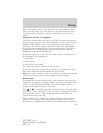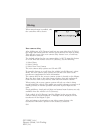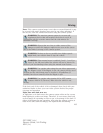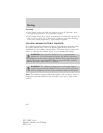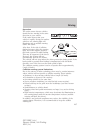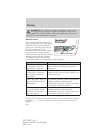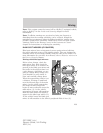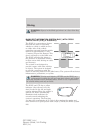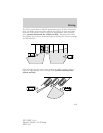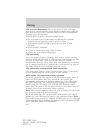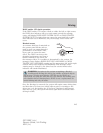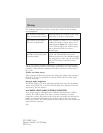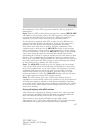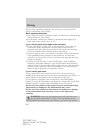
becomes active. Afterwards, the BLIS remains active for all speeds
including zero mph. BLIS is also active if the transmission is placed in N
(Neutral). If the transmission is shifted out of D (Drive) or N (Neutral)
the system will enter the CTA mode (see CTA operation below). Once
shifted back in to D (Drive) the BLIS mode will activate once driven
above 3 mph (5 km/h).
The BLIS will trigger the alert for vehicles that enter your blind zone
from the rear or merge in to the blind zone from the side. Vehicles that
you pass, or a vehicle that enters the blind zone from the front, will
trigger the alert only after the vehicle is present in the blind zone for
three seconds. Note: For vehicles that pass through the blind zone
quickly, typically less than two seconds, the BLIS will not illuminate the
alert.
The BLIS consists of two radar
sensors each located rearward of
the rear wheels hidden behind the
bumper fascia. Do not place any
type of bumper sticker in this area.
Note: The BLIS typically will not
detect parked vehicles, humans,
animals, or infrastructure (fences,
guard rails, trees, etc.). The BLIS
does not function when the transmission is in R (Reverse) or P (Park).
The BLIS does not provide any additional warning when your turn
signal is activated.
BLIS detection limitations: Due to the nature of radar technology,
there may be certain instances where vehicles entering and exiting the
blind spot zones may not be detected. Below is a list of circumstances
that may cause non-detection:
• Debris build-up on the rear quarter panel fascias
• Certain maneuvering of vehicles entering and exiting the blind zone
• Vehicles passing through the blind zone at very fast rates
• Severe weather conditions
• When several vehicles forming a convoy pass through the blind zone.
Driving
241
2011 MKX (mkx)
Owners Guide, 1st Printing
USA (fus)



